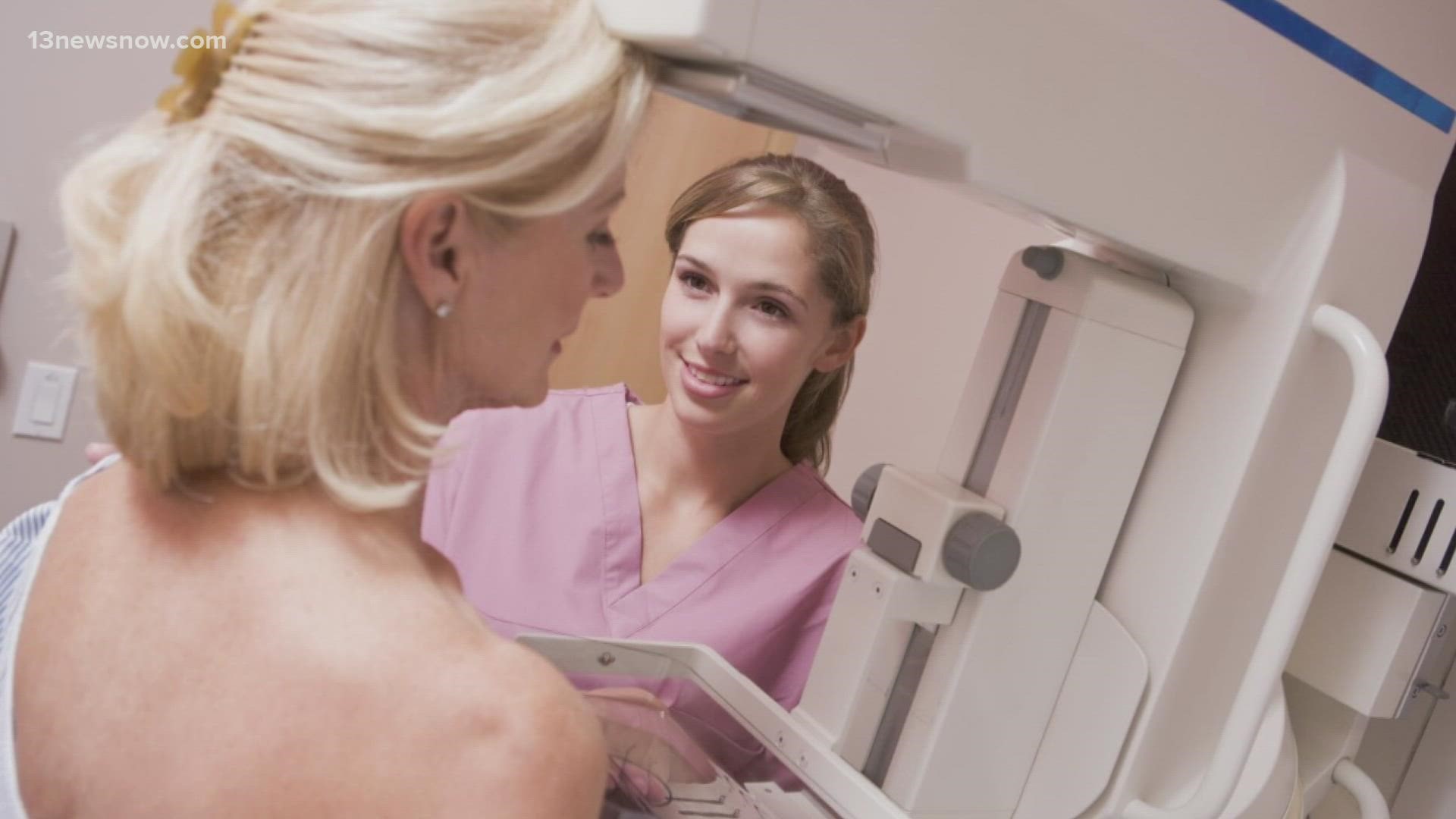NORFOLK, Va. — It’s breast cancer awareness month and we want to make sure you know the warning signs to stay healthy.
In the U.S., 1 in 8 women will be diagnosed with invasive breast cancer over the course of her lifetime.
Dr. Andrea Avalos with Riverside Health System says the earlier you get checked out, the better off you'll be.
"It is very important to start… restart getting your screening," she said. "It’s one of the top killers in the U.S. still."
During the height of the pandemic, cancer screenings fell across the country.
The CDC National Breast and Cervical Cancer Early Detection Program says its screenings fell by 87% for breast cancer.
That percent went down ever more for some women of color, which could further widen the gap for cancer-related health care in minorities.
Avalos says white women are the most at risk for developing breast cancer, but black women are the most at risk for dying from it.
"Genetics is one of them. The time of diagnosis, meaning they may not have been screened as soon as they should have. In all honesty, racism as with many things, in medicine is part of it as well. There are some women who complain of issues that go undiagnosed for many years," she said. "Also the fact that they don't have access to regular screening care. Would it be the insurance, would it be the the fact that they have lack of access or even just having access to a mammogram center."
The American Cancer Society says Asian, Hispanic, and Native American women have a lower risk of developing and dying from breast cancer.
She says checking for signs of breast cancer begins at home, periodically making sure everything looks and feels normal.
For women with a higher risk of developing breast cancer, Breastcancer.org says you should begin your self-exam by looking at your breasts in the mirror with your shoulders straight and your hands on your hips. You should look for any dimpling, redness, rashes or swelling.
Next, raise your arms and look for the same changes.
Then, you should lie down and use your right hand to check your left breast and vice versa. Start at your collarbone down to your abdomen and from your armpit to your cleavage to feel for any lumps.
Finally, do the same check while you are standing or sitting.
However, the American Cancer Society says if you do have a lump in your breast, you’ll most likely notice it doing regular activities like bathing or dressing, so there’s no need to do a self-exam once a month.
"Being aware of what is normal to you and what is not normal. When that happens, when that not normal happens, you should definitely speak to your provider," said Avalos.
She also says women should begin getting yearly mammograms when they turn 40.
When they are able to detect cancer early, she says there are lots of treatment options from medication to radiation.

